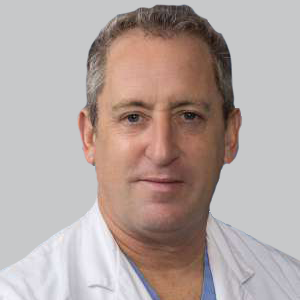Article
Epilepsy in the News: 4 Headlines
Author(s):
A major advance in epilepsy treatment may be found in the first direct brain responsive neurostimulator, upcoming AAN meeting will have an epilepsy focus, and other top stories.
About 65 million persons have epilepsy worldwide, including more than 2 million Americans, according to the Epilepsy Foundation. Epilepsy will develop in 1 in 26 persons in the United States at some point in their lifetime (150,000 new cases each year). One-third of patients live with uncontrollable seizures because no available treatment works for them; in 6 of 10 cases, the cause is unknown.
Still, efforts to identify the causes and safe and effective treatments are ongoing and making the news.
Turn the page to read the top stories in epilepsy and seizures diagnosis and treatment:
New Epilepsy Tool Fights Seizures
• The Responsive Neuro Stimulator (RNS) System is the first direct brain responsive neurostimulator.
• The RNS places electrodes on the surface of a patient’s brain over the focus of a seizure and connects the electrodes to a small computer implanted in the skull. When the computer recognizes seizure discharges, the device sends an electrical pulse to the focus point to block the seizure’s spread.
• The long-term efficacy and safety of responsive direct neurostimulation was assessed in adults with medically refractory partial onset seizures (average age, 34 years; average time with epilepsy, 19.6 years). The median preimplant frequency of disabling partial or generalized tonic-clonic seizures was 10.2 seizures a month.
• This study provides Class IV evidence that for adults with medically refractory partial onset seizures, responsive direct cortical stimulation reduces seizures and improves quality of life over a mean follow-up of 5.4 years.
• Some physicians call the RNS system the first major advance in epilepsy treatment in more than a decade for the most severely afflicted patients, it was suggested. The device does not eliminate seizures but can halve their frequency.
• The system may provide a springboard for more future “smart” medical devices.
LDH Inhibitors Show Promise for Epilepsy Treatment
• Lactate dehydrogenase (LDH) inhibitors are a promising new group of antiepileptic drugs, according to study authors.
• Neuronal excitation is regulated by energy metabolism, they noted, and drug-resistant epilepsy can be suppressed by special diets.
• The authors reported that seizures and epileptiform activity are reduced by inhibition of the metabolic pathway via LDH, a component of the astrocyte-neuron lactate shuttle.
• LDH inhibition hyperpolarized neurons, and it suppressed seizures in vivo in a mouse model of epilepsy.
• The authors also found that stiripentol, a clinically used antiepileptic drug, is an LDH inhibitor.
• Source: Sada N, Lee S, Katsu T, et al. Targeting LDH enzymes with a stiripentol analog to treat epilepsy. Science. 2015;347:1362-1367.
Early Alzheimer Brain Function, Memory Restored by Epilepsy Drug
• Levetiracetam, frequently used to treat epilepsy, reverses a condition in older patients who are at high risk for dementia resulting from Alzheimer disease, according to Johns Hopkins University researchers.
• The drug calms hyperactivity in the brain of patients with amnestic mild cognitive impairment (aMCI).
• Hippocampal overactivity is well-documented in patients with aMCI, and its occurrence predicts further cognitive decline and progression to Alzheimer dementia, the lead investigator said.
• “What we’ve shown is that very low doses of the atypical antiepileptic levetiracetam reduces this over-activity,” she stated. “At the same time, it improves memory performance on a task that depends on the hippocampus.”
Focus on Epilepsy at Neurology Conference
• The 67th AAN Annual Meeting, to be held April 18-25, 2015, in Washington, DC, will feature the Subspecialty in Focus Track, a series of 6 intensive topic-specific tracks designed for neurology subspecialists. The epilepsy program is scheduled for Monday, April 20.
• In “Treating the New-onset Epilepsy Patient,” faculty will show how to optimally identify, evaluate, and treat new-onset epilepsy with the use of video EEG illustrations, a review of new epidemiology data, and systematic reviews of clinical trial data. They will focus on infant and pediatric syndromes, the elderly, seizure risks and outcomes at different ages, and objective data on optimal treatments for patients with new-onset epilepsy.
• The “Future Therapies: How We Will Be Treating, Preventing, and Curing Epilepsy in the Year 2025” symposium will provide insight into emerging treatment options with a review of the following topics: multiple strategies for prevention and treatment of epilepsy, with the possibility of providing an eventual cure; signaling pathways and inflammatory processes showing promise for novel treatment strategies; unique strategies for potential treatment of brain diseases, particularly epilepsy, with optogenetics; and seizure detection and prediction devices as possible non–medication-related approaches to treatment.
• The epilepsy program will be offered in partnership with the American Epilepsy Society and the AAN Epilepsy Section.
Take-away messages:
• The first direct brain responsive neurostimulator may represent the biggest advance in epilepsy treatment in more than a decade for the most severely affected patients.
• Lactate dehydrogenase inhibitors are a promising new group of antiepileptic drugs.
• A drug frequently used to treat epilepsy also reverses a condition in older patients who are at high risk for dementia resulting from Alzheimer disease.
• The upcoming 67th AAN Annual Meeting will feature Subspecialty in Focus Track symposia on new-onset epilepsy patients and future epilepsy treatments.




